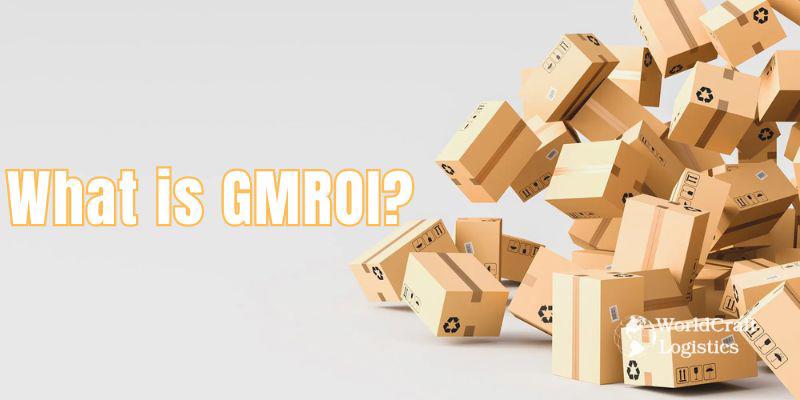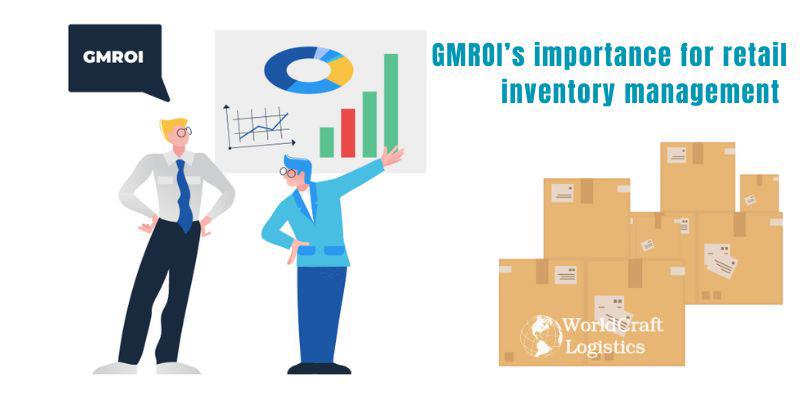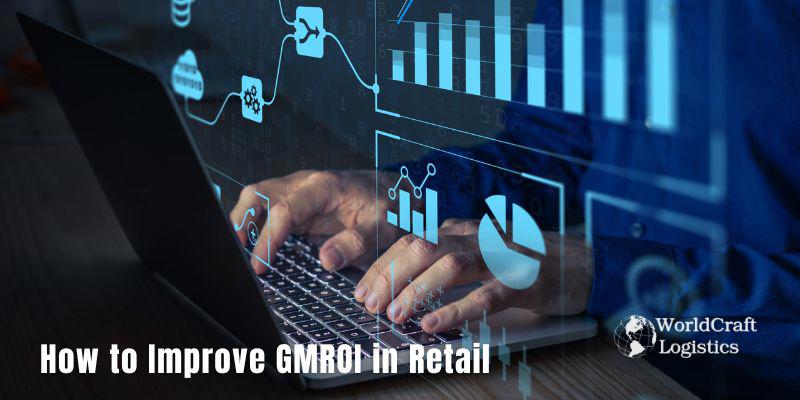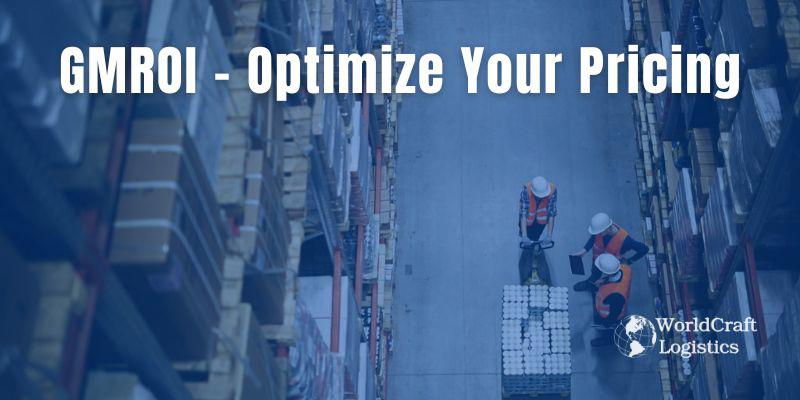
Starting June 1st, 2023 Our warehouse fee will be $0.65/cubic foot per month
In effort to lower the warehouse storage fee during inflation, we have went narrow aisle racking.This construction took us four months but the project is finally completed. With narrow aisle racking, we are able to drop storage by 24%.We as partners will go through this inflation together.
07/01/2024

In order for your business to remain viable, profitability is essential. This entails ensuring that the return on your investment in inventory is adequate. Put simply, the revenue generated from selling your inventory must exceed the costs associated with its acquisition, storage, and fulfillment.
Hence, it becomes imperative to meticulously assess key metrics like gross margin return on investment (GMROI). By diligently calculating and monitoring your GMROI, you gain valuable insights for strategic pricing, budget allocation, and inventory management, fostering not only survival but prosperity for your enterprise. In this article, we delve into the significance of GMROI in optimizing retail inventory management.

Gross margin return on investment (GMROI) serves as a pivotal metric within the retail sector, gauging inventory profitability. It precisely quantifies the profit yield per dollar allocated to inventory procurement, elucidating the efficacy of investment strategies in bolstering returns.
Put simply, the GMROI formula provides insight into the profitability gained per dollar invested in inventory. It quantifies the expenses incurred in purchasing, transporting, and storing inventory, alongside the costs linked to fulfilling customer orders, juxtaposed with the gross margin obtained from selling said inventory.
In addition, to learn more about promoting effective inventory sales, please see some other articles shared by Worldcraft Logistics' team of experts below:
👉 Phantom Inventory: Causes, Solutions, and Best Practices
👉 Surplus Inventory: Strategies to Minimize Excess Stock
👉 Days sales in inventory (DSI): Meaning, formula, optimal method

In accordance with WorldCraft Logistics, the calculation of GMROI can vary depending on the retailer's operational framework and accounting infrastructure. However, the conventional approach remains straightforward:
GMROI = Gross profit / Average inventory cost
The gross profit is pivotal, encompassing variable costs such as labor and supplies. The formula for computing gross profit is as follows:
Gross profit = Revenue - Cost of goods sold (COGS)
Assessing gross profit provides insight into optimizing your company's utilization of variable costs to maximize value.
Retailers employ the average inventory cost metric to gauge the volume of inventory held during a designated timeframe.
Calculating the average inventory cost provides crucial insights into the necessary inventory levels required to sustain sales operations. Furthermore, it serves as a pivotal tool in identifying and quantifying inventory losses stemming from theft, shrinkage, damages, and product expiration.
The standard formula to calculate average inventory cost is:
Average inventory cost = (Current inventory + Previous inventory) / Number of periods

The GMROI of your brand stands as a pivotal supply chain Key Performance Indicator (KPI), offering invaluable insights into profitability. These insights fuel essential inventory operations, shaping strategic decisions and optimizing performance.
The GMROI metric offers a precise insight into the correlation between your inventory investments and your overall business profitability.
A low GMROI could signal excessive spending on inventory due to persistent overstocking, leading to higher inventory holding and procurement expenses. Conversely, it might suggest inadequate stocking, resulting in lost sales opportunities due to stockouts, as unsold inventory cannot generate revenue.
Understanding your GMROI is crucial as it offers insights into effectively managing inventory levels to enhance profitability. Consistently monitoring your GMROI empowers strategic inventory reordering, ensuring maintenance of optimal inventory levels for maximizing ROI.
Retail proprietors can employ GMROI on a SKU basis to evaluate individual product effectiveness. Through the computation of gross profit and average inventory cost per SKU, a detailed analysis of inventory can be attained, aiding in pinpointing high-performing products and those with sluggish sales.
With the invaluable insights offered by GMROI, businesses can enhance their decision-making processes and fine-tune inventory strategies, ultimately boosting profitability.
Businesses may need to boost production of popular SKUs or revise pricing tactics to lower prices on slow-moving items. This ensures management of holding costs and inventory turnover.
Your GMROI serves as a crucial metric in gauging the necessity for SKU rationalization, signaling the opportune moment to consider discontinuing specific SKUs. Such a decision might entail phasing out slow-moving high-profit items from your inventory.
Although inventory GMROI proves invaluable, employing a broad formula to "gauge your temperature" presents several challenges.
This metric may not provide a comprehensive assessment of your company's profitability as it excludes key expenses such as real estate, workforce, transportation, and marketing. Despite a healthy GMROI, losses may still occur due to misallocated investments in other areas.
When applied annually to CoGS and revenue, this formula fails to differentiate between individual product performances, blending both lucrative and underperforming product lines into a single metric. To utilize this metric effectively, a more detailed approach is necessary, such as measuring GMROI for specific categories.
Yet, conducting a granular analysis down to individual SKUs or store/SKU combinations manually proves exceedingly challenging, rendering detailed analysis using this metric impractical without specialized tools.

In the realm of retail, it's crucial to remember that while benchmarking against similar retailers within your sector is valuable, each company must establish its own GMROI benchmarks. This necessity stems from the unique retailing strategies employed by individual retailers, coupled with their intricate corporate structures, capital outlays, and operational costs.
Despite the potential for a retailer to exhibit a lower GMROI compared to the sector average, profitability can still be achieved by effectively managing non-inventory-related expenditures. However, if your GMROI figures aren't meeting expectations, implementing the following strategies can help boost your performance:
In the realm of retail investment, a low Gross Margin Return on Investment (GMROI) signals a detrimental allocation of resources into inventory. This entails the acquisition of excessive inventory without a corresponding rate of sale.
Retailers equipped with the ability to accurately anticipate future consumer demand stand poised to make more prudent procurement decisions, thereby optimizing returns on their inventory investments. Essentially, precise allocation of stock, tailored to maximize sales and minimize expenses across various locations and channels, holds the promise of substantially elevating inventory ROI.
Yet, the benefits extend beyond mere financial gains. Anticipating demand facilitates efficient distribution of existing inventory, allowing for optimal reallocation without the necessity of acquiring new stock.
However, it is imperative to discern between retailers relying solely on historical sales data for forecasting and those leveraging sophisticated analytics to forecast demand, which considers myriad influencing factors. Understanding this disparity underscores the potential for refining strategies to enhance GMROI and curtail inventory expenditure.

Increasing the ticket price of an item, and this will increase your GMROI. Right? But hold on. If all things are equal, when prices increase, total sales decrease. That’s the law of supply and demand at work, meaning that if the price was set too high and people stopped buying your product, your GMROI would decrease. That’s why just increasing prices has no guarantee of increasing your GMROI, and if done irresponsibly, can actually hurt your bottom line quite a bit.
But decreasing prices can also improve your GMROI. Let’s say you have a large quantity of deadstock taking up shelf space. This inventory brings no revenue and is thus pure cost. If you knew the exact price that would allow you to move all of this inventory at maximal revenue, you could increase your GMROI while dropping prices.
So instead of increasing or decreasing your prices, you should be thinking of setting your prices to the point of maximal GMROI per SKU / store.
Using price as a lever to optimize GMROI is so successful, in fact, that there is a multi-billion dollar industry of analytics companies providing pricing optimization software to retailers.
Employing savvy techniques in online order fulfillment and returns management is imperative for trimming business expenses that may erode your GMROI. With consumers increasingly adept with technology and demanding flexible fulfillment choices, retailers must be discerning in selecting strategies to meet these evolving consumer preferences while maintaining cost-effectiveness.
In conclusion, GMROI is a powerful strategy for retail profitability, emphasizing the true return on inventory investment. It promotes a holistic approach to inventory management, enabling data-driven decisions on products, categories, and suppliers. Retailers can adjust purchase orders, negotiate better pricing, and optimize promotions based on GMROI analysis. Regular monitoring helps identify trends, assess strategies, and adapt to market changes. GMROI also fosters accountability and collaboration within the supply chain, driving profitability and competitive advantage.
A GMROI surpassing 1.0 is conventionally deemed favorable. It signifies that for every dollar invested in merchandise, the company yields over one dollar in profit.

ROI, or Return on Investment, serves as a crucial gauge of investment profitability, determined by dividing the return of an investment by its initial cost. This metric is commonly represented as a percentage or ratio. Conversely, GMROI, which stands for Gross Margin Return on Investment, offers insight into investment efficiency. It is computed by dividing the gross margin of an investment by its cost, considering expenses related to the cost of goods sold and sales. GMROI provides a more comprehensive assessment of profitability compared to ROI, encompassing various operational factors.
To compute GMROI in Excel, follow these straightforward steps:
Input the overall gross margin (GM) for the specific product or service.
Enter the total capital invested in the product or service.
Divide the gross margin by the total invested capital to determine the GMROI.
Conclude by formatting the outcome as a percentage.
While GMROI can be monitored yearly, a monthly analysis may become necessary for specific products, particularly those with shorter shelf lives.
Fluctuations in demand due to seasonal shifts can significantly influence sales and inventory dynamics, consequently influencing GMROI computations.
SEO
Digital Marketing/SEO Specialist
Simon Mang is an SEO and Digital Marketing expert at Wordcraft Logistics. With many years of experience in the field of digital marketing, he has shaped and built strategies to effectively promote Wordcraft Logistics' online presence. With a deep understanding of the logistics industry, I have shared more than 500 specialized articles on many different topics.

Education
01/05/2025

Education
02/18/2025

Education
01/01/2024

Education
08/28/2024

Education
11/13/2023